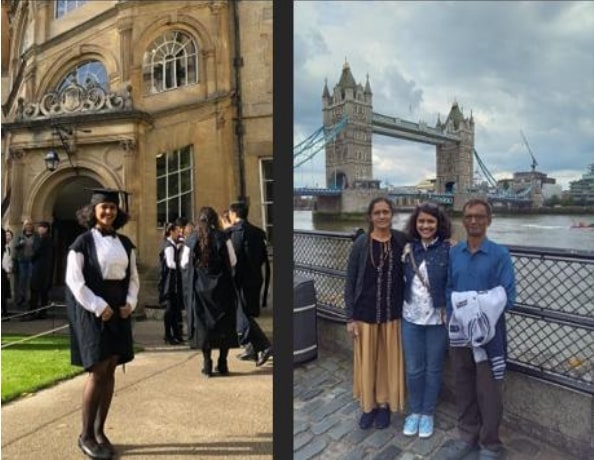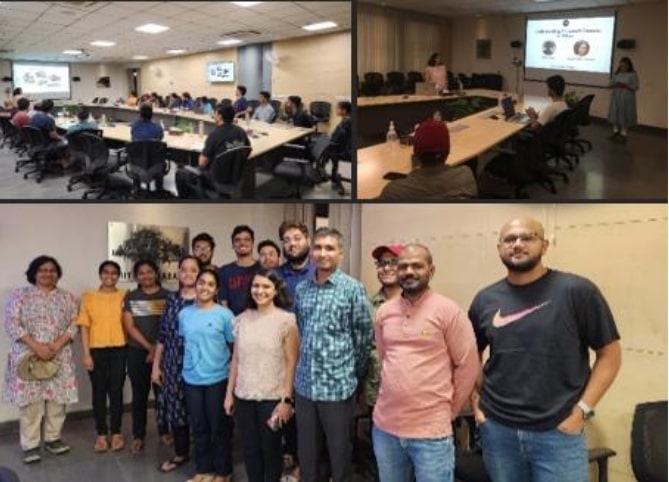Discovering a Passion for Research
Sindhu’s love for research began during her undergraduate years when a workshop on computer vision and image processing sparked her interest. "I felt like, oh OMG, this is so good and I want to learn more about it," she recalls. Encouraged by her undergrad mentor, Professor Sankar, she began working on national-level projects and papers.
It was at one such conference that she met Professor Jawahar from IIIT-Hyderabad. She expressed her keen interest in pursuing vision research and shared her aspirations to work with him. Impressed by her drive and profile, he accepted her into the MS program at IIITHyderabad. "That was the beginning," she says, "but the true research really started at IIIT-H. My undergrad work laid the foundation, but it was at CVIT that my real journey into computer vision began."
Diving Deep into Multimodal Learning
At CVIT, Sindhu worked on cutting-edge projects in multimodal learning, focusing on audiovisual research. Her projects ranged from lip reading and lip-to-speech synthesis to audio and video super-resolution. She collaborated closely with her research peers, Prajwal and Rudrabha, which enriched her technical understanding and collaborative skills. What excited her the most was the dual impact of such research—intellectually stimulating and socially relevant.
The CVIT Experience: Growth, Friendship, and Grit
Coming from Karnataka, Sindhu initially found it challenging to adjust to life away from home. But soon, the hostel culture, late-night project work, and bonding with lab mates made CVIT feel like home. She describes her lab peers as instrumental in helping her overcome selfdoubt. "I was scared to even speak during meetings at first," she recalls, “but I slowly learned that it’s okay to not know everything.”

Research Challenges and Life Lessons
Like many young researchers, Sindhu faced moments of doubt -- especially when experiments didn't yield results. Her strategy? Never giving up, even when things looked uncertain. She worked on multiple projects and sought constant feedback from mentors. Her advisors, Professor C V Jawahar and Professor Vinay Namboodiri played a crucial role in shaping her understanding of what research truly entails. "It's not just about getting results," she says, "it's about asking the right questions and embracing the process."

Beyond CVIT: Oxford and the World Stage
After completing her Master’s, Sindhu briefly worked on image forensics at Verisk Analytics before starting her PhD at Oxford with Prof. Andrew Zisserman. The transition to Oxford was made smoother by her time at IIIT-H, which had already exposed her to diverse cultures and high academic standards.
"Oxford doesn’t have a campus in the way we imagine," she explains. "It’s a university town where buildings are spread out." She lives in university accommodation and appreciates the structured yet independent PhD program, which is typically completed in four years.
Advice for Aspiring Researchers
Sindhu’s message to current students is simple but powerful: “Don’t underestimate yourself. Just apply and try. You might be the best, but you’ll never know unless you take the first step.” She urges students to not fear failure, to be honest about their weaknesses, and to never skip advisor meetings—even when progress feels slow.
Coming Full Circle
Returning to CVIT to speak with current students was a deeply emotional experience for Sindhu. "A few years ago, I was in their place," she reflects. "I never imagined I’d return to give a talk here." Her humility, warmth, and clarity serve as a beacon for anyone embarking on a research journey.
Sindhu Hegde’s story is more than an academic success—it’s a lesson in perseverance, self-awareness, and the importance of community. As she continues her research at Oxford, her journey inspires the next generation to embrace the unknown with courage and curiosity.


